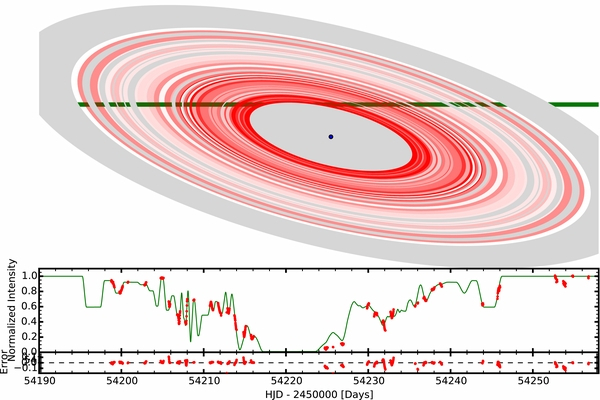Enhanced Milankovitch Cycles
Milankovitch cycles related to periodic fluctuations in the eccentricity of Earth’s orbit, tilt of Earths rotation axis and of precession of Earths rotation axis. Periods are generally on the order 20,000 - 100,000 years and relate to glaciation, or ice ages. All of these cycles alter the amount of solar radiation that reaches the surface of our planet.
In astronomical terms the times scales for Milankovitch cycles are relatively short. The project aims to look at longer term variations of these cycles that might relate to movement of the solar system through the Milkyway. External encounters with other stars are known to cause perturbations to planetary objects, so the project will look at these encounters in relation to Milankovitch cycles.

Illustration showing the three Milankovitch cycles. Image credit: K. Cantner, AGI.
Gap Opening in the J1407b Exoring by Nearby Earth-Mass Exomoons
The recently discovered ring system around the gas giant J1407b is one of the first exoplanets discovered to have a ring system similar to Saturn. We know that gaps formed in Saturn’s rings are carved out by either embedded moons inside the rings and from orbital resonances of external larger moons. J1407b might be the first planet discovered to harbour Earth-mass exomoons. The project aims to numerically investigate the gap opening of Earth-mass exomoons in the J1407b exoring and further constrain potential masses of any exomoons.

The above image shows the lightcurve data and modelled ring, clearly showing that the ring has gaps. Image credit: Kenworthy & Mamajek 2015.
Part of this project will be supported by internal UROS grant to support a undergraduate summer research placement.